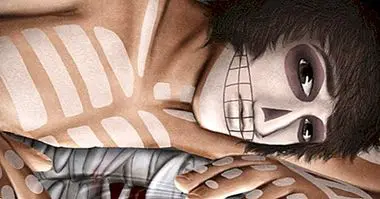Circadian rhythm disorders: causes, symptoms and effects
If you are one of the people who have problems when it comes to "sleeping when you touch", you might want to know what the disorders of the circadian cycle.
The importance for our health of having a good sleep has been known for a long time. However, the moment in which we enter into a dream state is not decided by us: it is something of the so-called Cardiac rhtyms, which are the oscillations in the biological functions of our body that regulate the intervals in which we sleep and in which we are awake. Alterations in these oscillations can lead to circadian rhythm disorders, which have a very negative impact on our quality of life, so it is worth knowing what mechanisms are behind them.
But first, we have to understand the concept of homeostasis.
What is homeostasis?
The sleep rhythm obeys a property called homeostasis, which is the way in which organisms try to maintain the biochemical balance between all their parts so that the whole works well . One way to easily understand what homeostasis is is to think about what happens when we run: at first, the body extracts the energy needed to keep the muscles running by "burning" the sugar that is available in the blood, but after a few minutes This begins to be scarce, so, to avoid falling into an imbalance, our body begins to use stored fat as fuel.
The same happens with the circadian rhythm, which also works based on a logic of equilibria of homeostasis. If we have slept a lot the night before, that day we will not sleep until after 12 o'clock at night, but if we have not slept almost nothing we will want to go to sleep shortly after dinner.
What are circadian rhythm disorders?
Of course, the schedules that people dedicate to sleep are not created spontaneously regardless of the environment of the organism; It adapts so that wakefulness tends to coincide with the hours when there is more light, and sleep occurs during the night. Therefore, the simple fact of keeping your eyes near a source of artificial light just sustainably before going to sleep delays the appearance of sleep.
As the time we dedicate to sleep is regulated in a homeostatic way, nothing happens if our schedules are affected by anomalies: during the following hours, this "lag" is regulated and returns to normal . But if the jet lag in our sleeping hours is maintained for a long time, then we will be talking about a circadian rhythm disorder.

Symptoms of circadian rhythm disorders
The disturbances of the circadian rhythm appear when there is a lag between the moments in which we are sleepy (or do not have it) and the periods of appearance of day and night, which also correspond to socially agreed schedules.
In this way, A person with circadian rhythm disorders may sleep well, but he will do so when he "does not touch" . The consequences of this tend to lead to lack of sleep in the early hours of the morning and, at the same time, in the appearance of drowsiness during the day. The latter are the two basic symptoms of these disorders, and at the same time they shape the types of disorders of the circadian cycle.
On the one hand, there is the disorder in which the sleep schedule is advanced, arriving early the moment in which the desire to sleep appears and in which one wakes up. Another type of disorder of the circadian cycle is one in which sleep is delayed, so that one is unable to sleep until the wee hours of the morning and one experiences a lack of sleep if work or study schedules force one to wake up at night. morning. A third type would be a chaotic mixture of the previous two.
But nevertheless, it must be taken into account that the diagnosis must be made by a specialist who offers personalized treatment .
Possible causes of these sleep disturbances
Among the possible causes that explain the appearance of circadian rhythm disorders there are basically two:
1. Biological factors
Is about structural or biochemical alterations in the parts of the brain that intervene in sleep regulation, such as the hypothalamus.
2. Factors linked to the interaction with the environment
These causes they have to do with the environment and the people with whom the individual interacts . For example, starting work in the night shifts of a warehouse can cause problems in this aspect, or get used to using the mobile phone in bed and with the lights off.
Treatment of circadian rhythm disorders
The way to intervene in this spectrum of disorders is based on two actions: advancing or delaying the appearance of the dream and advancing or delaying the moment of awakening . For this it is customary to use oral administration of melatonin, a substance that also produces the human body to regulate the circadian rhythm and whose presence in relatively high levels is linked to the appearance of sleep, and exposure to light, which it serves to delay the appearance of the dream.
Both tools must be used in a sustained manner under professional supervision, and a single session is not enough, since the objective is to modify a habit that by definition is persistent .



















